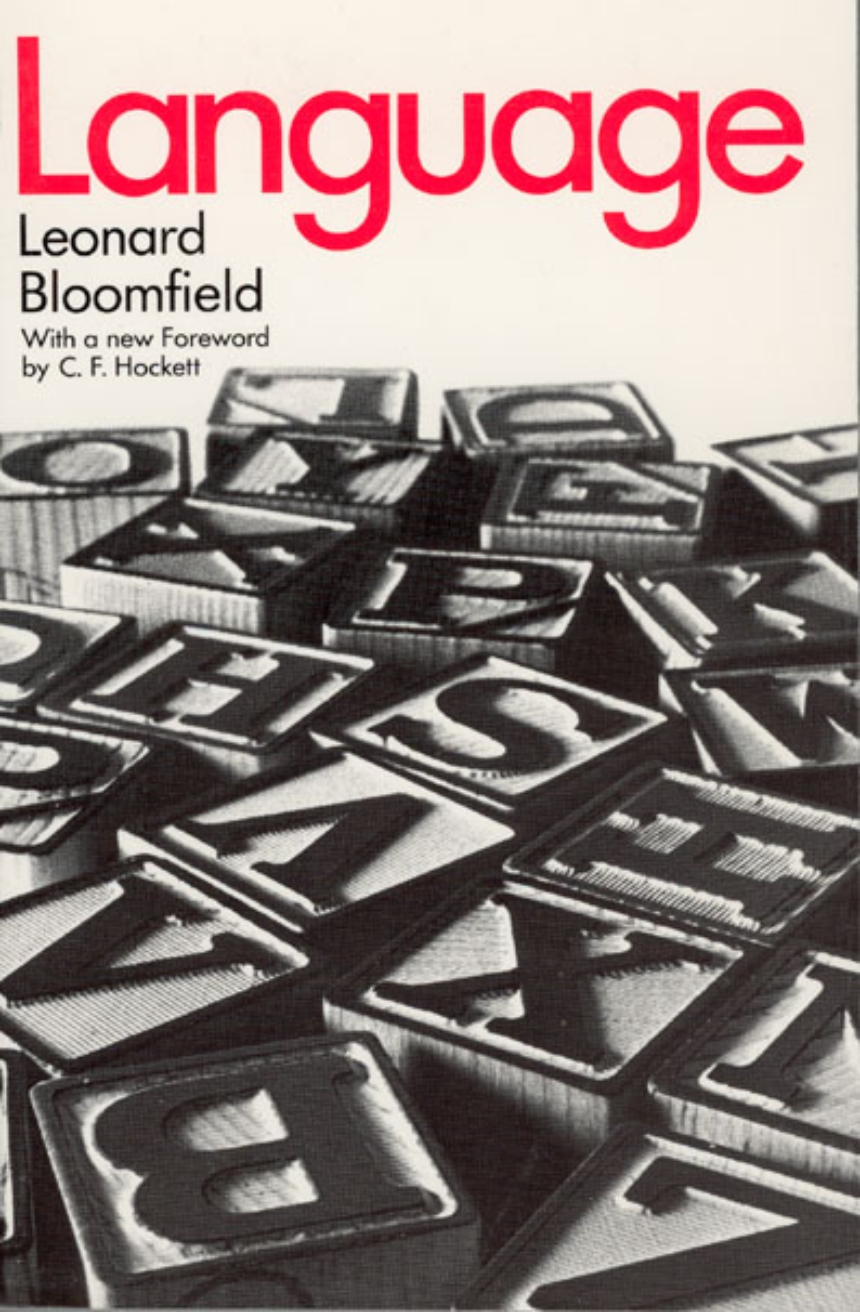Language
Perhaps the single most influential work of general linguistics published in the twentieth century, Leonard Bloomfield’s Language is both a masterpiece of textbook writing and a classic of scholarship. Intended as an introduction to the field of linguistics, it revolutionized the field when it appeared in 1933 and became the major text of the American descriptivist school.
The book quickly became the primary text for the American descriptivist school of linguistics. Bloomfield’s clear, systematic methodology and focus on observable language data laid the groundwork for a new era in linguistic theory. His work, which covers a wide range of topics, from phonology and morphology to syntax and semantics, provides a comprehensive framework for understanding how language functions as a structured system.
Through twelve detailed chapters, Bloomfield explores topics such as the sounds of language, the structure of words, and the organization of sentences. His emphasis on structuralism and the empirical study of language has had a profound impact on the discipline, making Language an essential reference for anyone interested in the history and development of linguistic theory.
As both an introduction for newcomers and a resource for more advanced students, Language continues to be a crucial text in understanding the scientific study of language and its ongoing evolution.
The book quickly became the primary text for the American descriptivist school of linguistics. Bloomfield’s clear, systematic methodology and focus on observable language data laid the groundwork for a new era in linguistic theory. His work, which covers a wide range of topics, from phonology and morphology to syntax and semantics, provides a comprehensive framework for understanding how language functions as a structured system.
Through twelve detailed chapters, Bloomfield explores topics such as the sounds of language, the structure of words, and the organization of sentences. His emphasis on structuralism and the empirical study of language has had a profound impact on the discipline, making Language an essential reference for anyone interested in the history and development of linguistic theory.
As both an introduction for newcomers and a resource for more advanced students, Language continues to be a crucial text in understanding the scientific study of language and its ongoing evolution.
Reviews
Table of Contents
Foreword
Preface
1. The Study of Language
2. The Use of Language
3. Speech-Communities
4. The Languages of the World
5. The Phoneme
6. Types of Phonemes
7. Modifications
8. Phonetic Structure
9. Meaning
10. Grammatical Forms
11. Sentence-Types
12. Syntax
13. Morphology
14. Morphologic Types
15. Substitution
16. Form-Classes and Lexicon
17. Written Records
18. The Comparative Method
19. Dialect Geography
20. Phonetic Change
21. Types of Phonetic Change
22. Fluctuation in the Frequency of Forms
23. Analogic Change
24. Semantic Change
25. Cultural Borrowing
26. Intimate Borrowing
27. Dialect Borrowing
28. Applications and Outlook
Notes
Bibliography
Table of Phonetic Symbols
Index
Preface
1. The Study of Language
2. The Use of Language
3. Speech-Communities
4. The Languages of the World
5. The Phoneme
6. Types of Phonemes
7. Modifications
8. Phonetic Structure
9. Meaning
10. Grammatical Forms
11. Sentence-Types
12. Syntax
13. Morphology
14. Morphologic Types
15. Substitution
16. Form-Classes and Lexicon
17. Written Records
18. The Comparative Method
19. Dialect Geography
20. Phonetic Change
21. Types of Phonetic Change
22. Fluctuation in the Frequency of Forms
23. Analogic Change
24. Semantic Change
25. Cultural Borrowing
26. Intimate Borrowing
27. Dialect Borrowing
28. Applications and Outlook
Notes
Bibliography
Table of Phonetic Symbols
Index
